Nordkapp with rooftop tent 2022 – part 2
Index
Finland for the first time
…in the previous episode, we ended up somewhere in Finland, in a nice car park with a real bathroom.
That night, we didn’t have a musical Russian on our doorstep. During the night, only some truck parked its trailer and drove on, which some of the family didn’t even notice.
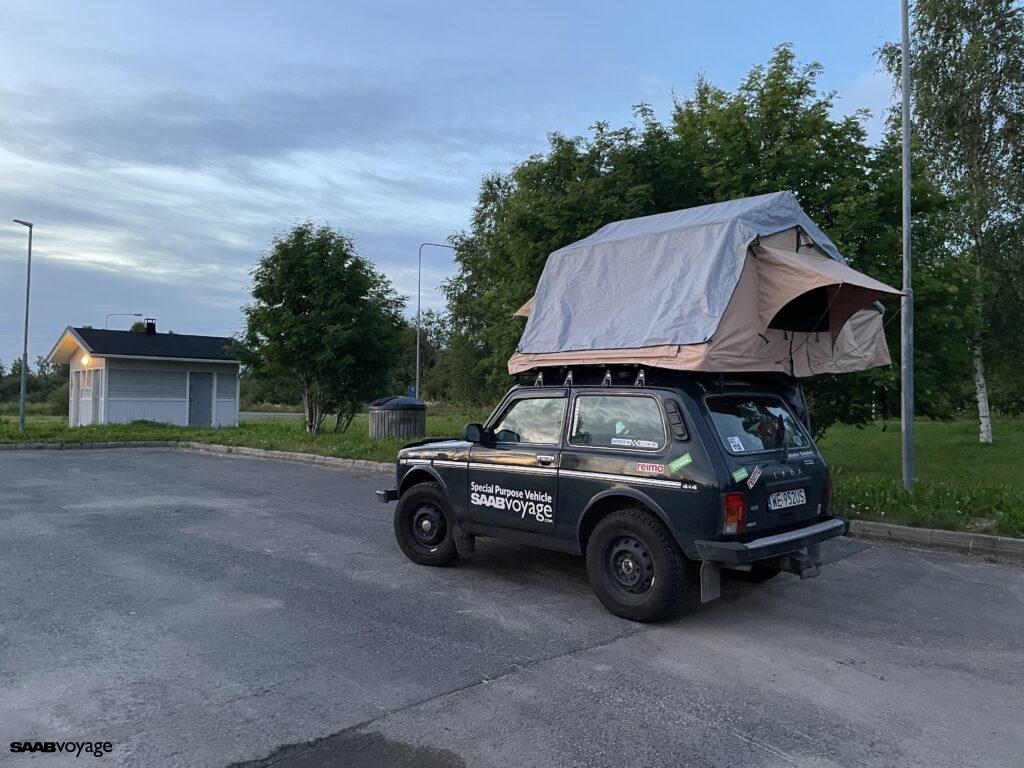
Under these conditions, we decided that the best baseline for the day would be pasta with dry sausage and Latvian four-cheese sauce.
Looking around, we realized that some 400 m from our car park was the official central point of Finland. A commemorative photo and drive on!
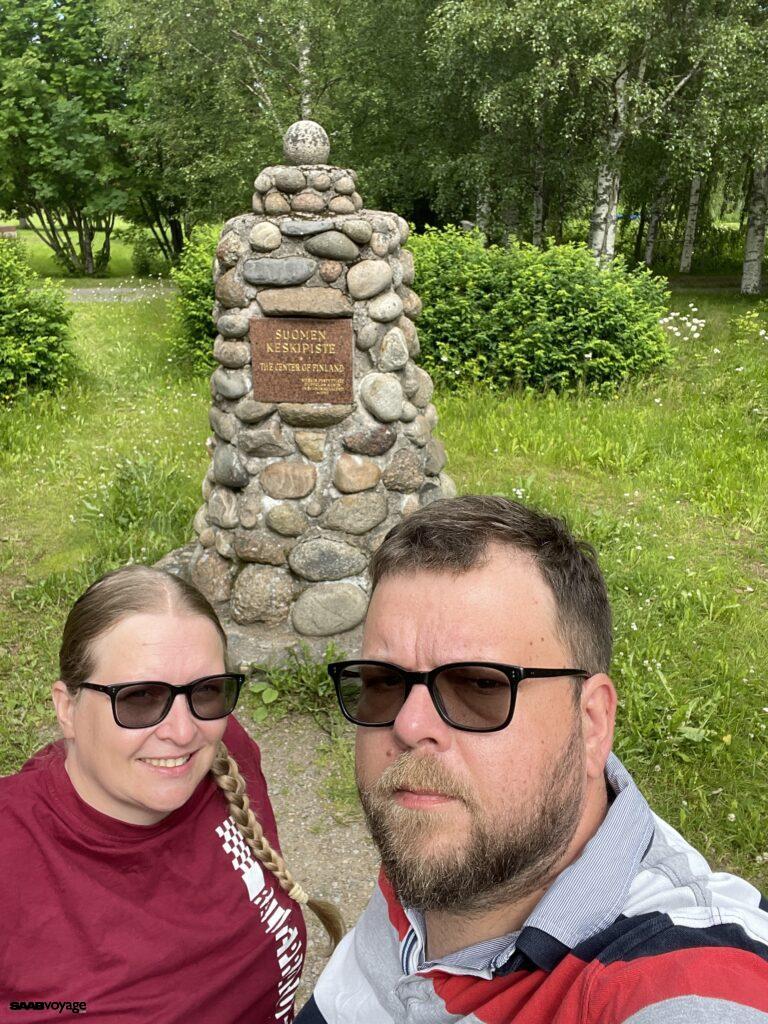
One of our regular agenda items on almost every trip is a visit to automotive museums. This was also the case this time – in Oulu.
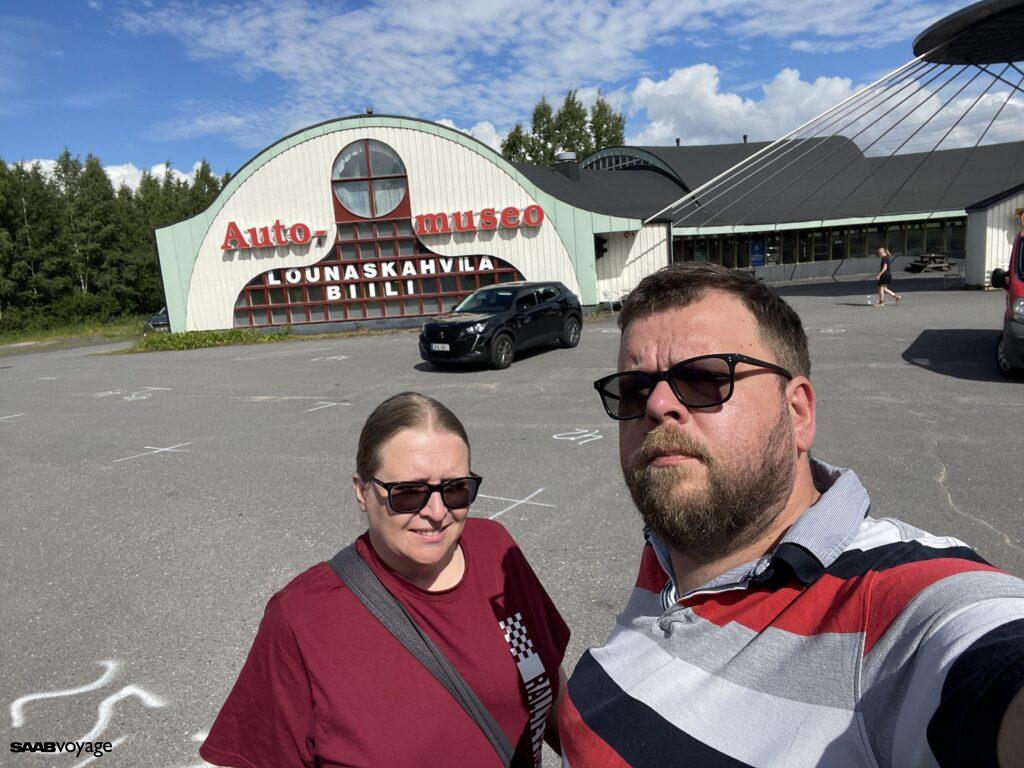
The museum is run by the local automobile club. Each exhibit has the owner’s name on a plaque. Visiting time: only about half an hour, but well worth the visit nonetheless. Prominent among the exhibits is a motorbike with one large wheel, which is equipped with a roller helmet, as well as caps – a prototype of studded tyres.
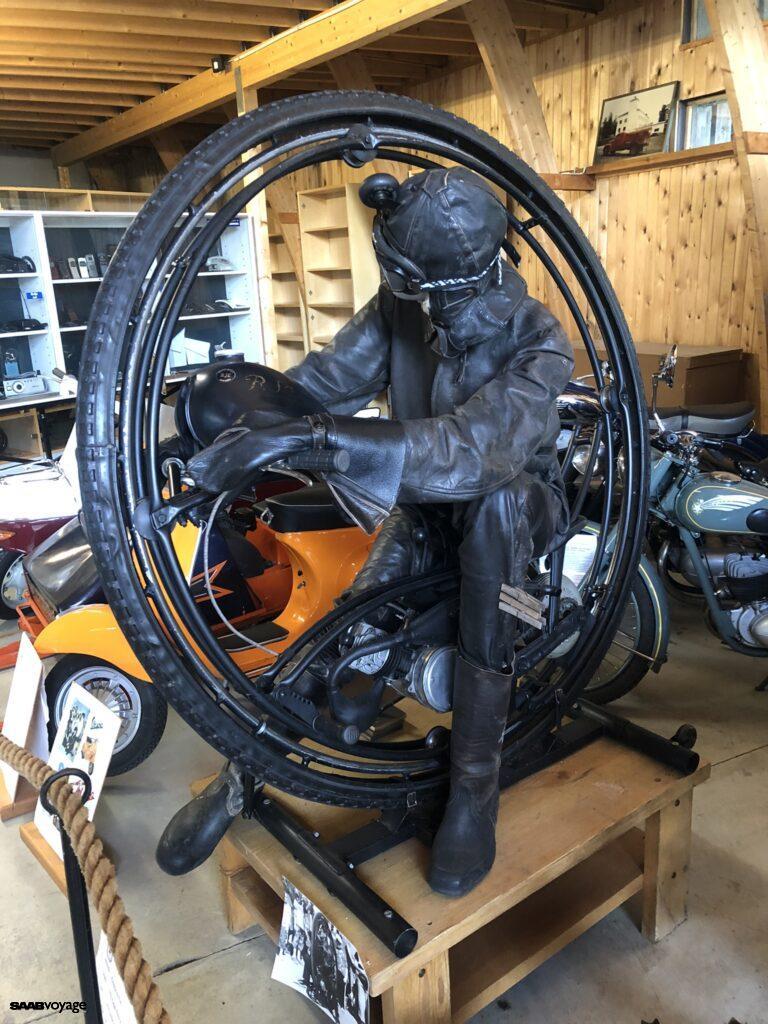
In the museum, you can also see an extract from the 1906 rules and regulations for motorists. The maximum speed is 15 km/h, on bends 10 km/h. The driver is to be neatly dressed in a suit. Not to be outdone by our knowledge of the Finnish language, we were rescued by Google Translate:
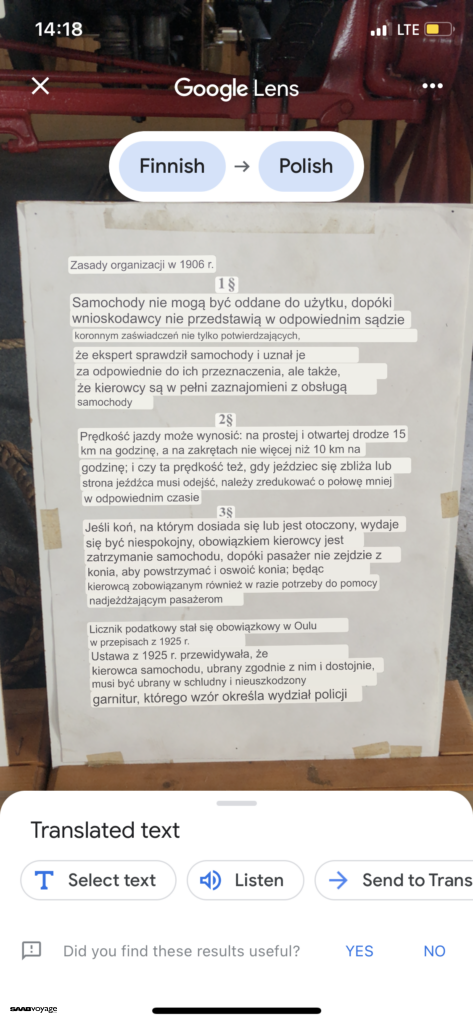
In addition, there was an exhibition of taxi meters (by Halda, among others), as well as the old huge mobile phones that taxi drivers probably used.
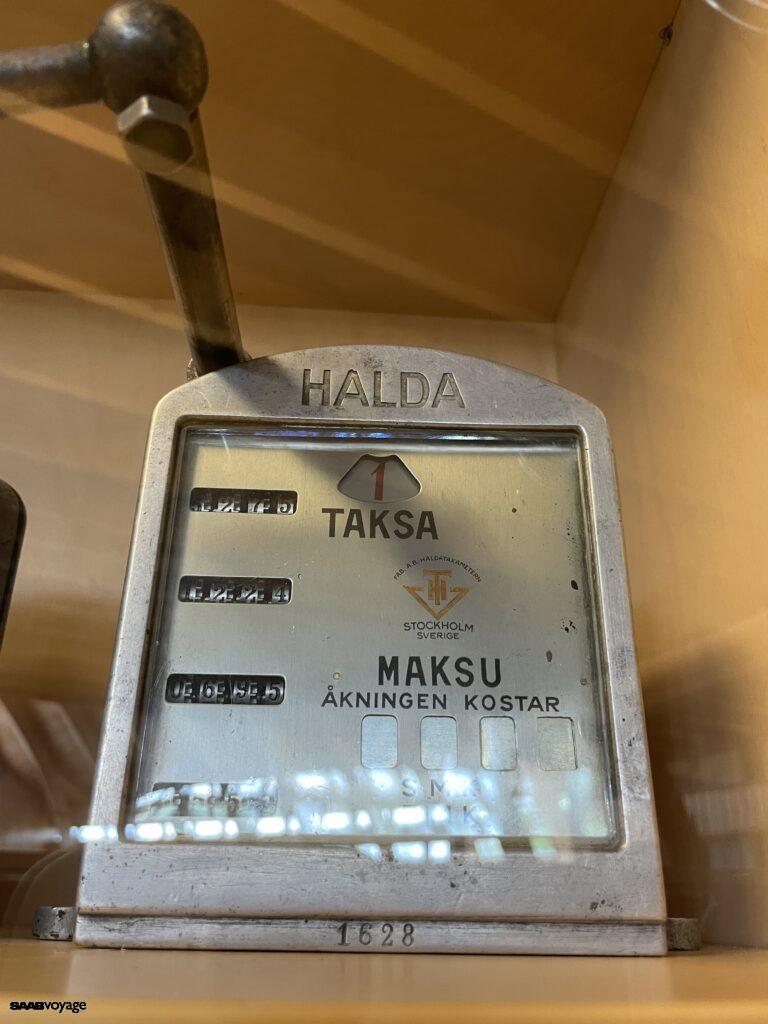
We had visited Oulu before, so this time we were guided by the attractions from atlas obscura. We found two interesting items to look at: one is graffiti from 1977, with a spelling mistake, which someone paints over and over again, and it comes back; The other is a stone – The Groke from the story of the Moomins. We chose The Groke. By the way, Oulu is the city where the world championships in air guitar are held.

Instead of taking the motorway to Rovaniemi, we chose more side roads. Consequently, we arrived from a different direction than usual, landing almost in the centre. A city of sixty thousand people, it is altogether a metropolis for Finland. Previously, we had taken a direct route – landing directly at Santa Claus. Santa Claus Village Centre summer does not have a Christmas atmosphere. The snow doesn’t do the atmosphere, and it comes out fair. Or maybe it’s because we arrived just before closing time?

After Rovaniemi, we turned to Inari. We took advantage of the beautiful sunny weather, ignoring the fact that it was close to midnight. We stopped for dinner (spicy herrings and herrings in mustard), mosquitoes tried to eat us, but we didn’t give up.
In general, we are constantly impressed that there are tables at various places, e.g. at the junction of two inter-urban roads, where you can take a break. Only that quite often there are no rubbish bins there.
After crossing the Arctic Circle, we started to notice reindeer. On the road, by the road, along the road. But with culture and maintaining health and safety. A reindeer running on the roadway sticks to its lane, if it crosses the road it looks around and walks straight ahead.
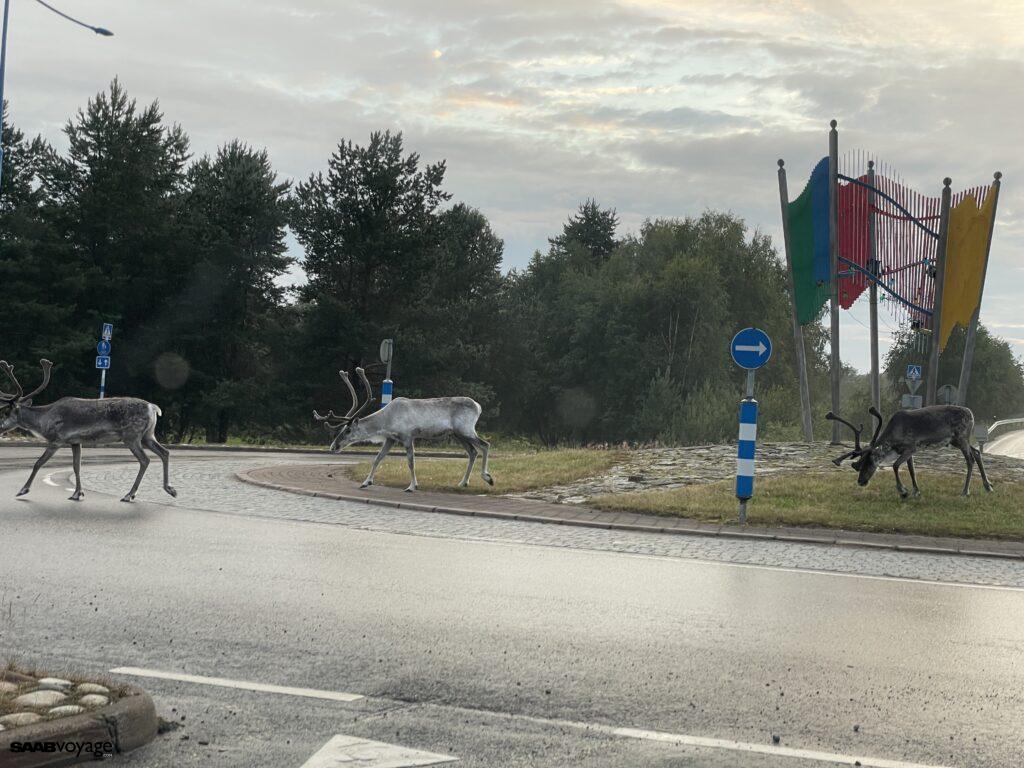
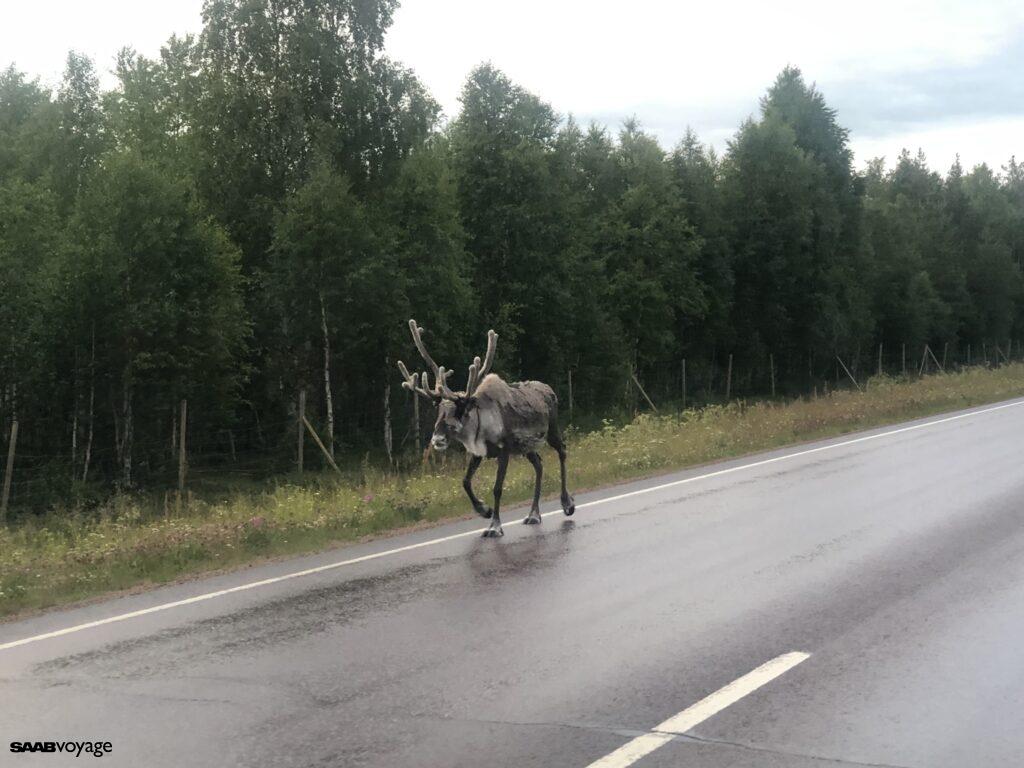
We know from previous experience that reindeer don’t like carrots, but as part of our previous contact with them, we learned that they are crazy about the reindeer weevil.
Inari
We continued on as planned and finally went to sleep on this sunny evening. We had a car park by the lake, between Ivalo and Inari. Interestingly, the car park was below the main road; all we had to do was turn sideways and we were off. There was a toilet, but it was wooden. We don’t like this model. The car park had a nice slope down to the lake. Peace and quiet, just two cars whose passengers made no noise. We got together efficiently in the morning and on driving out onto the road the first thing we saw were reindeer.
Lakselva
The next destination was Lakselva. There was a mention in the 2011 guidebook that the northernmost wine production facility was located in this village. But unfortunately, no one knew anything at the local liquor shop, and there was nothing at the address given in the guidebook either. Out of curiosity, we found local Polish specialities in the same shop. Completely unknown to us (ginger beer to be drunk with Stolichnaya vodka), even though a producer from Łódź was actually listed on the can. And Stolichnaya is Russian vodka, not Polish. The conclusion is that information in guidebooks tends to become outdated.
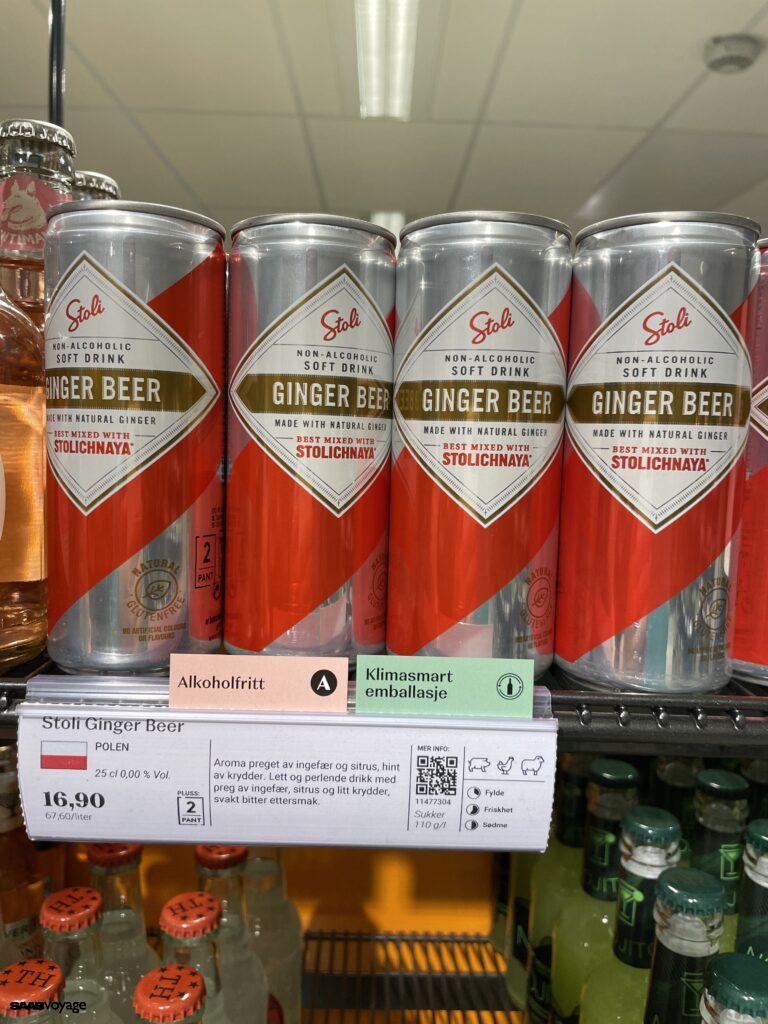
We then continued our journey towards Nordkapp. We searched for attractions on Google Maps, as we had visited the guidebook items earlier. So there was now time for some spontaneity. One of them was to be a sunken boat sticking out of the water. There was no boat, but the view was lovely.
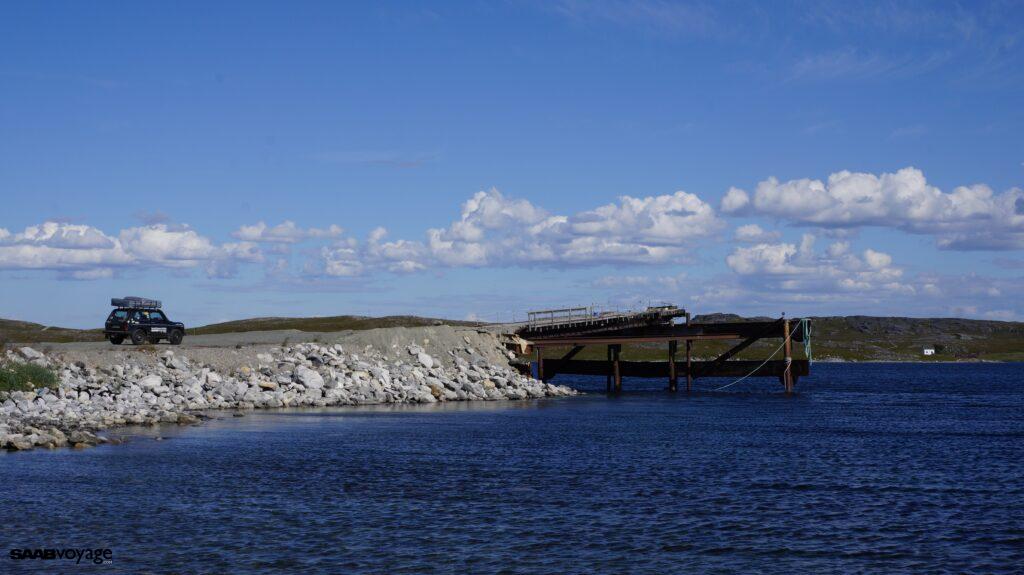
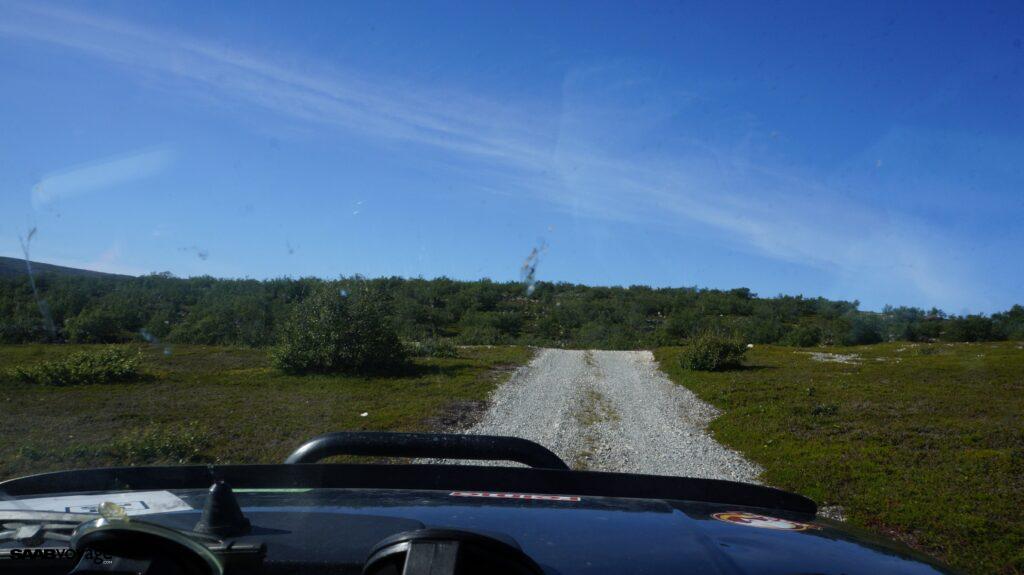
Honningsvag
We had a laundry stop planned for the day at the Honningsvag campsite. We politely paid for the use of the washing machine and dryer. To our surprise, when we were already in the middle of drying, another man from the staff came and started to express resentment that we should not use their equipment, even though we had paid for the use. Because these are things only for campers sleeping on the campsite. Anyway, we finished our laundry and moved away. Strangely. It is proof that Norwegians can also have a bad day.
To Nordkapp!
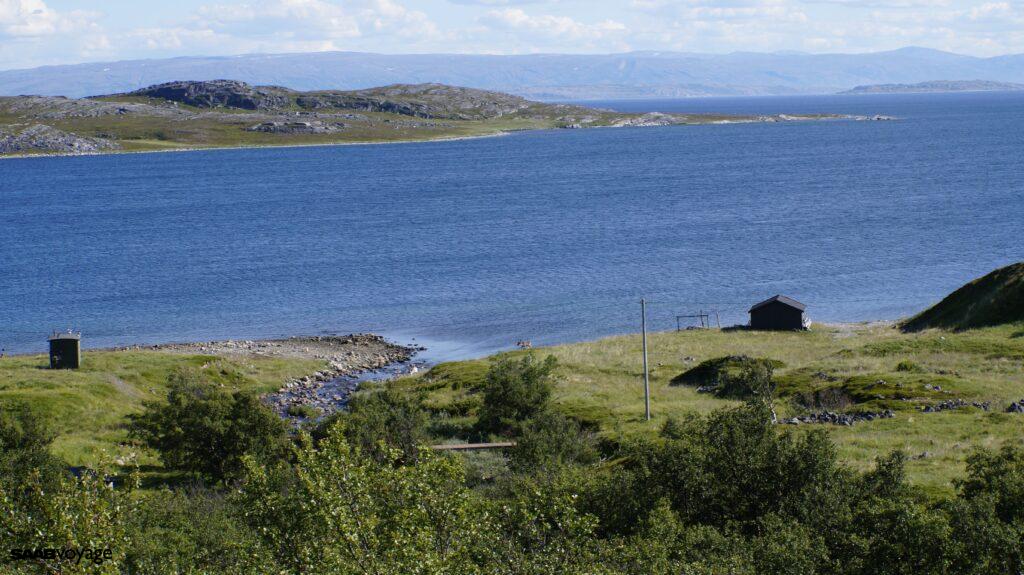
On the way, we passed the starting point of the winter convoy; a place where nice photos of the aurora are taken in winter, and also where we had previously almost crashed a drone. It’s cool to drive this way, recalling previous trips.
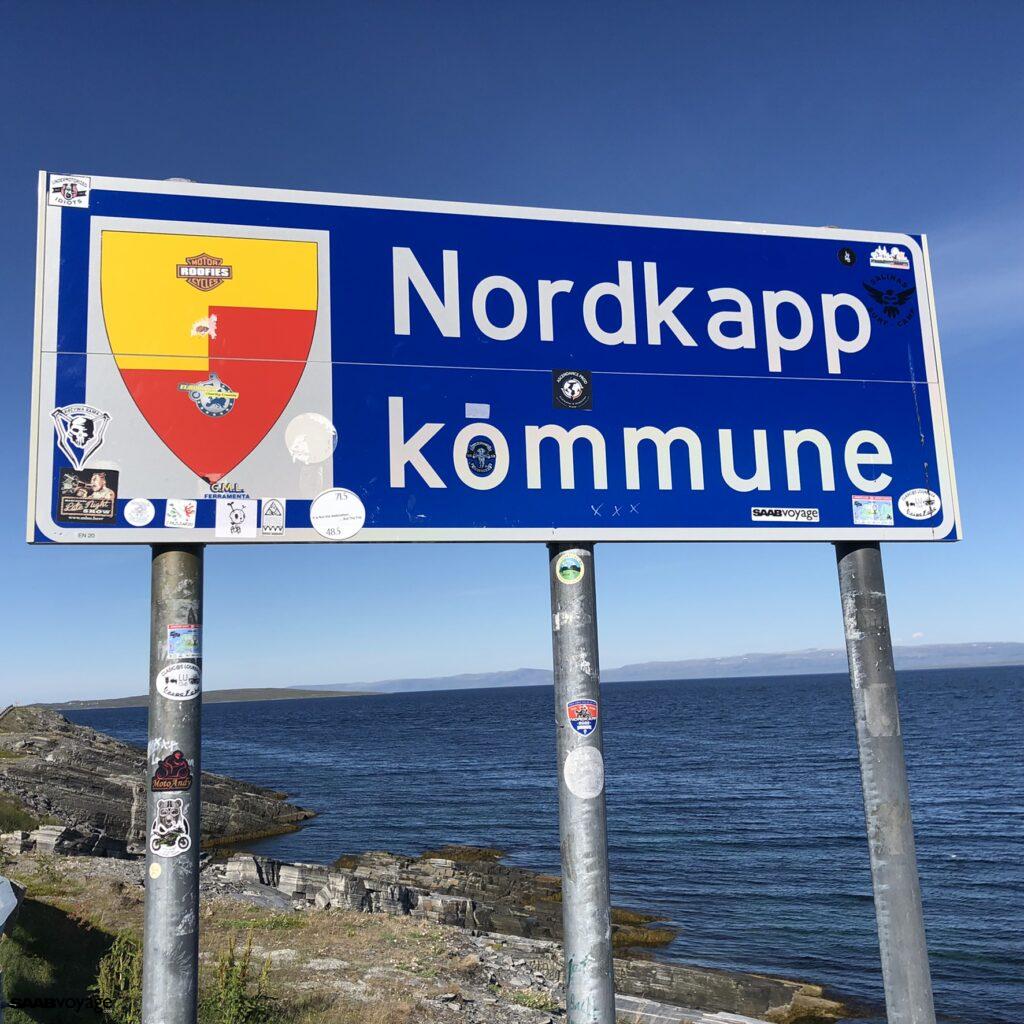
We finally arrived at Nordkapp (I mean, the tourist-appropriate one, not the geographical one). Car park – almost full. Under the globe – crowded. We learned from a nice Polish woman from the staff that this day is exceptionally crazy. Normally there is an overflow of tourists, but on this day it was an exaggeration. We also found out from her when and how many buses would arrive and when we should return here to avoid the crowds. The next day at 9pm there was supposed to be a break. All in all, with a polar day and the facility open until 1am it was a very good time.
Where to sleep in the middle of nowhere?
The question remained: where to sleep? All the nice alleys, bays, side roads were filled with campers. And so all over Mageroya. We even drove to Gjesvaer, believing that it was far enough away from Nordkapp that a quiet place would be found for us there without others. There were people there too.
Eventually we turned off the road and stopped in the middle of nowhere, next to some rusting construction equipment. It was worth it, in the morning the reindeer came to us.
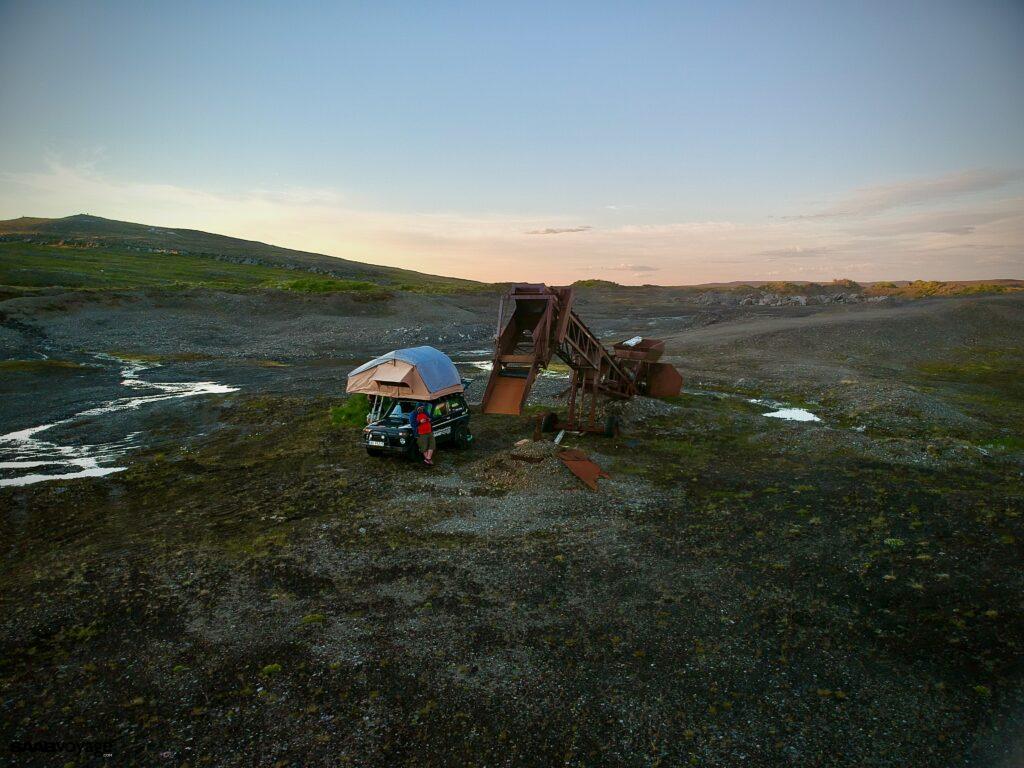
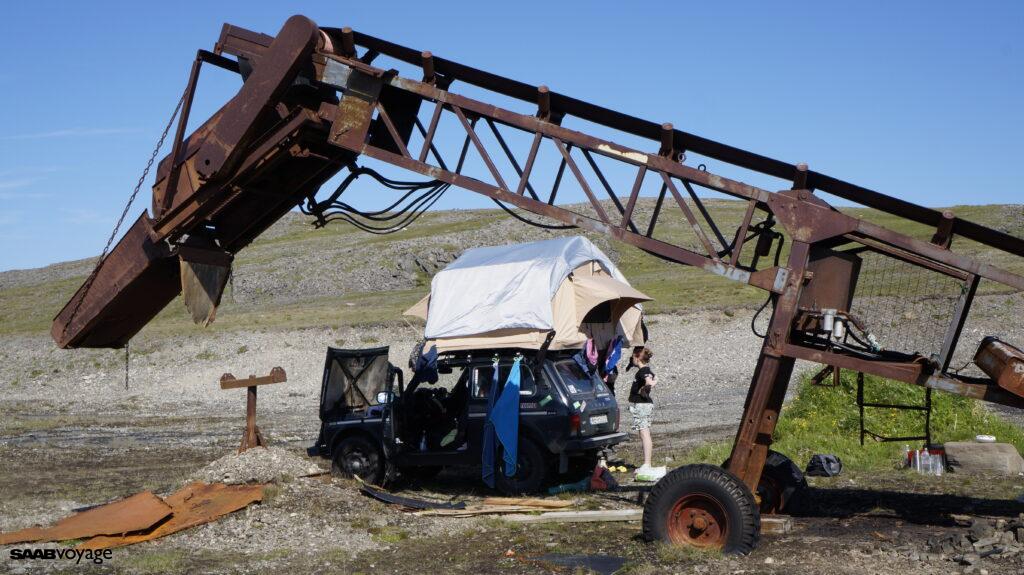
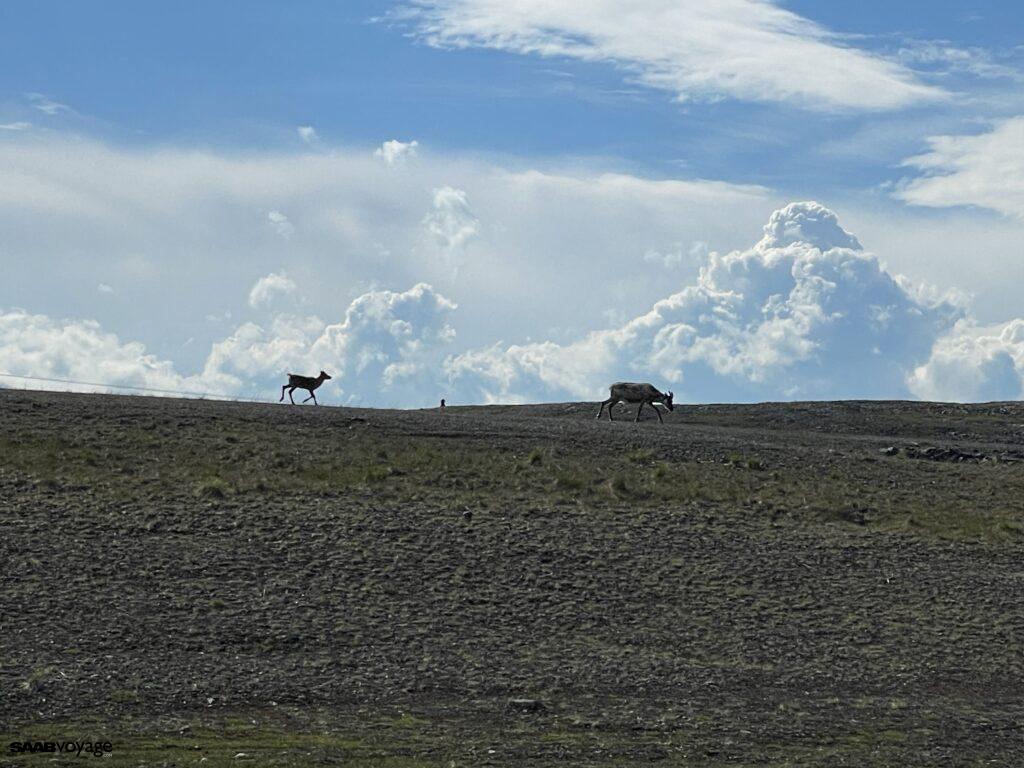
A new day has dawned. Formally. Because it was bright all the time. We had an appointment with Nordkapp for the evening, so we drove to Honningsvag to the museum. Basically, that’s the advantage of visiting certain places repeatedly, you can squeeze them to the last drop.
The museum, contrary to its name, focuses on telling the story of the coastal heritage and the rebuilding of Finmark after the Second World War. Of course, the theme of the Northern Cape is also there, but it is not the most important one. That part is taken care of at the museum on NordKapp.
To begin with, visitors are greeted by an exhibition about the origins of the NordKapp sightseeing tour – what it was like in the days before the tunnel was built, what’s the deal with the broken glasses, etc.
It gets more serious further on. We learn the story of a robbery hunt for whales and other fatty fish. And how it ended. We were touched by the exhibition on forced displacement during the Second World War, when Hitler ordered a “scorched earth” to await the Russians. Some people fled to the mountains and survived. We also saw a film about a fishing village that disappeared in a matter of hours because of the German troops and was never rebuilt again.
Learning about the history of displacement during the war, plus the exhibition at NordKapp (more on that later), plus our knowledge of Tirpitz (also more on that later) began to add up to give us a coherent picture of Norway’s wartime situation.
After the war, the aim was to re-establish fishing in Honningsvag as soon as possible. We also watched a film about several approaches to building breakwaters. Nowadays such madness and fantasy in dealing with the elements would not be possible, Health and Safety at Work does not allow it.
Overall an interesting museum, not too big, just right for two hours of visiting when it’s raining. Recommended.
Opposite the museum is a gift shop. We wanted to be clever and thrifty, and buy stamps and postcards at Honningsvag, instead of at Nordkapp itself. It turned out that the prices for postcards, magnets, souvenirs, figurines, scarves, Nordkapp-branded jackets, and anything else you can think of, are the same everywhere. We suspect that prices are regulated. By the way, there were some exceptional promotions in the shop at Nordkapphallen.
In Honningsvag we are always impressed by the huge Hurtigruten cruise ships, the Tesla superchargers at the only REMA1000 superstore and the tiny Shell station.
We remembered that we ate crabs in Murmansk. Since they were there, they should also be available here, after all the sea is the same. And indeed, there was a crab house in Honningsvag. There was. It is no longer there, in its place is a pizzeria whose staff are puzzled by regular questions about crabs. Interestingly, the King Crab restaurant is still marked on Google Maps. It’s there, but it’s no longer a crab restaurant.
A quick google search pointed us to a recommended crab place. In the village where our Saab friends (Tom and Martin, hello!) stayed last night, there is a restaurant serving these creatures. Here, you can also hold a crab, and interview the staff about the rules of fishing and all that goes with it. And then taste. Well worth it.
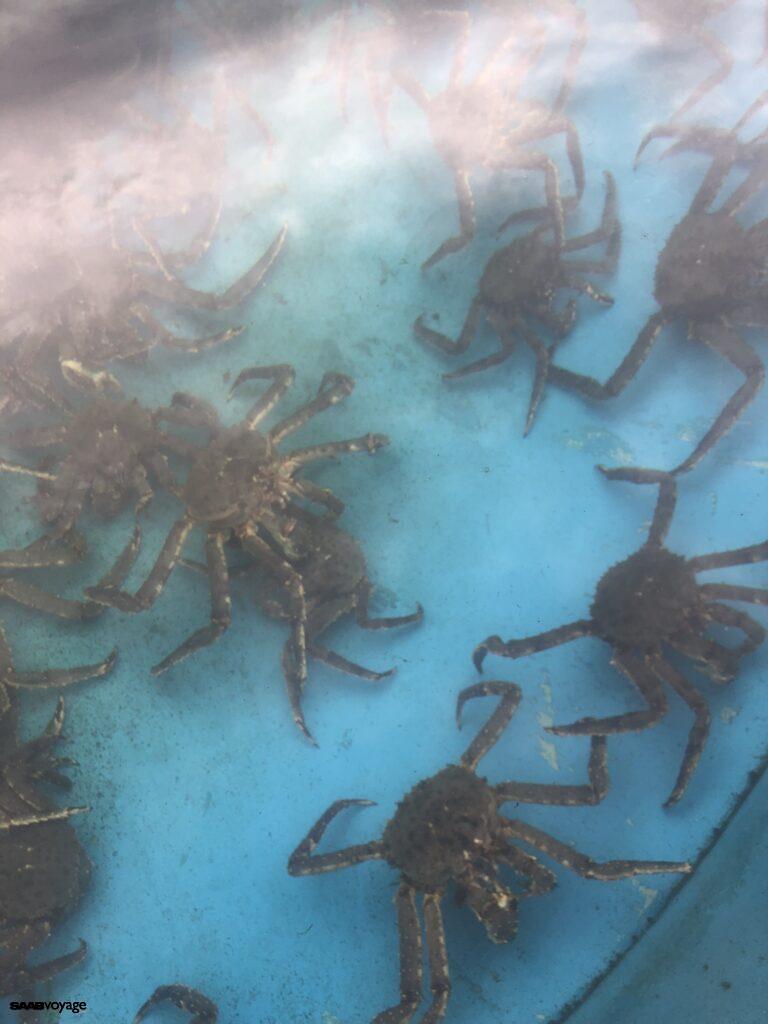
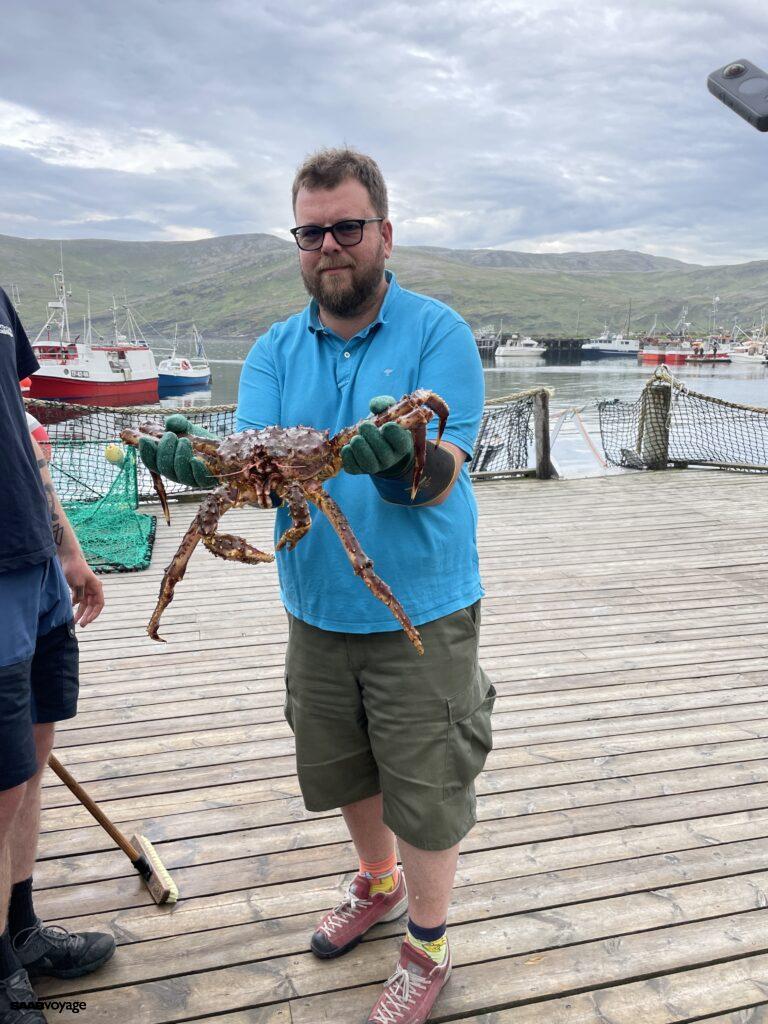
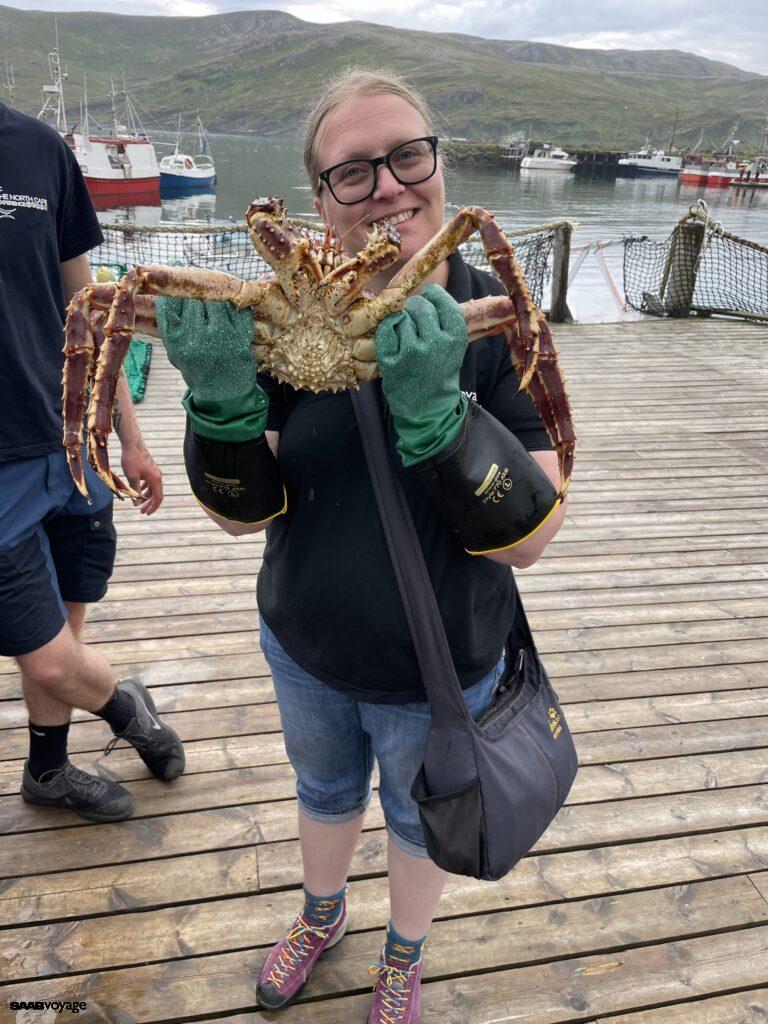
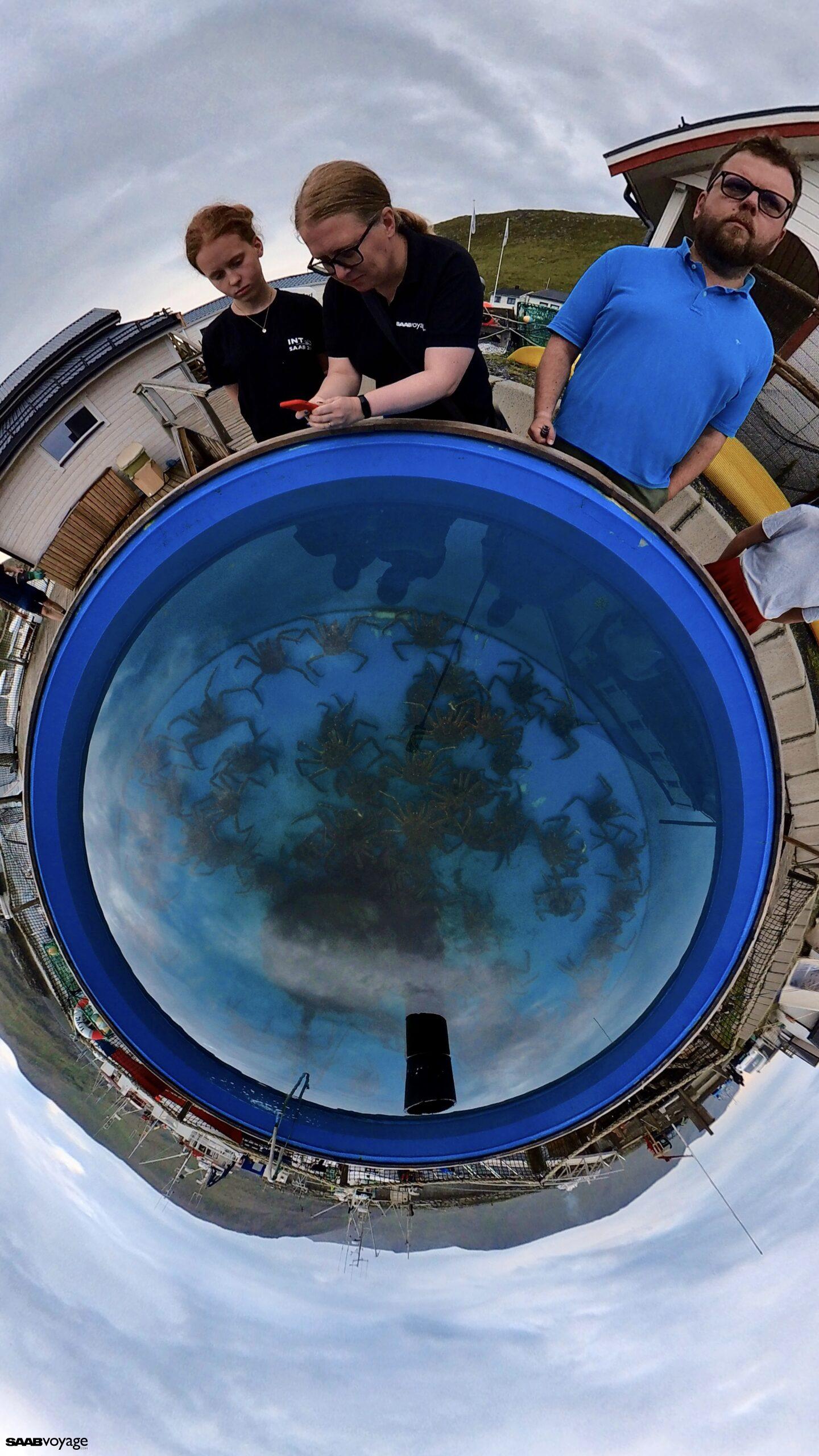
Since there were supposed to be fewer tourists in the Northern Cape today, we went there to feel like real tourists. We saw everything on the programme: films, exhibitions, a memorial hall dedicated to the King of Thailand, etc. In general, not much has changed here over the years. The film presented in the cinema hall (projection every 30 minutes), which used to impress us, is actually a commercial for Nordkapp, showing the 4 seasons: the horror of winter (watch out! snow! ploughs! even more snow!), aurora borealis, spring, reindeer, summer, tourists etc. The girls watched with interest. Again.
The core exhibition is one thing, and this time around the cinema room and toilets we read through information boards depicting the history of the Battle of Nordkapp and the protection of Allied supplies to Murmansk during the Second World War.
In terms of differences from our previous visits to the Northern Cape, this time there was no opportunity to take a photo of the car under the famous globe. All in all, given the crowds of people there, it would have been irresponsible to allow motorists into the place.
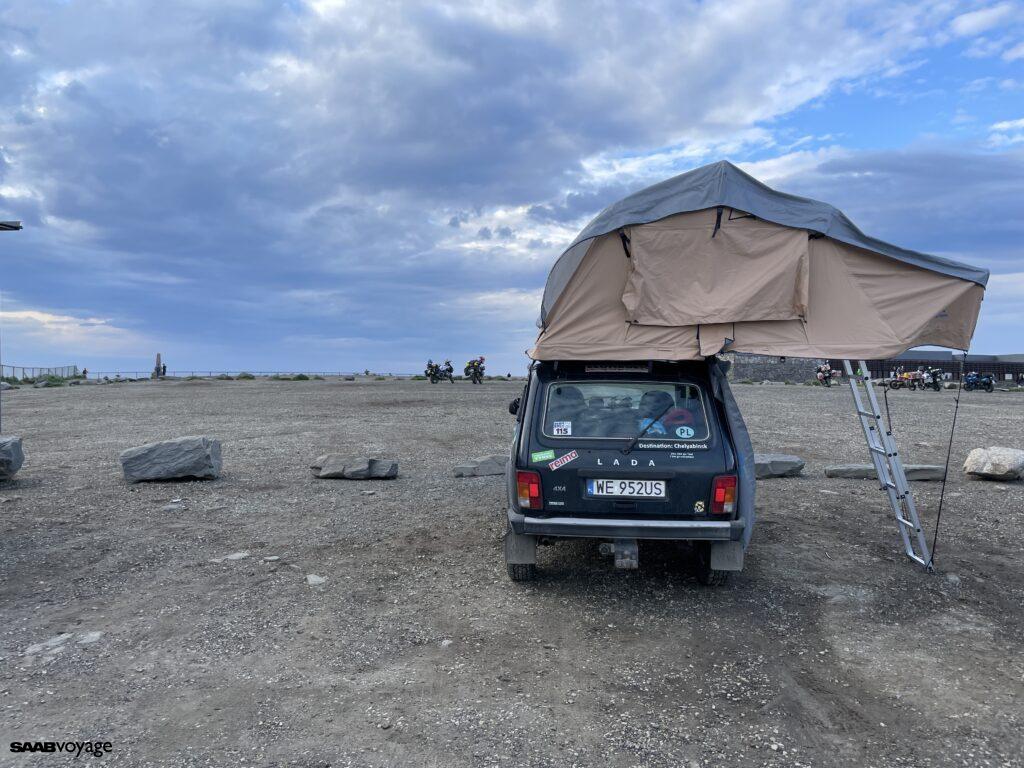
Finally, like true conquerors of Nordkapp, we went to sleep in the car park, on the roof.
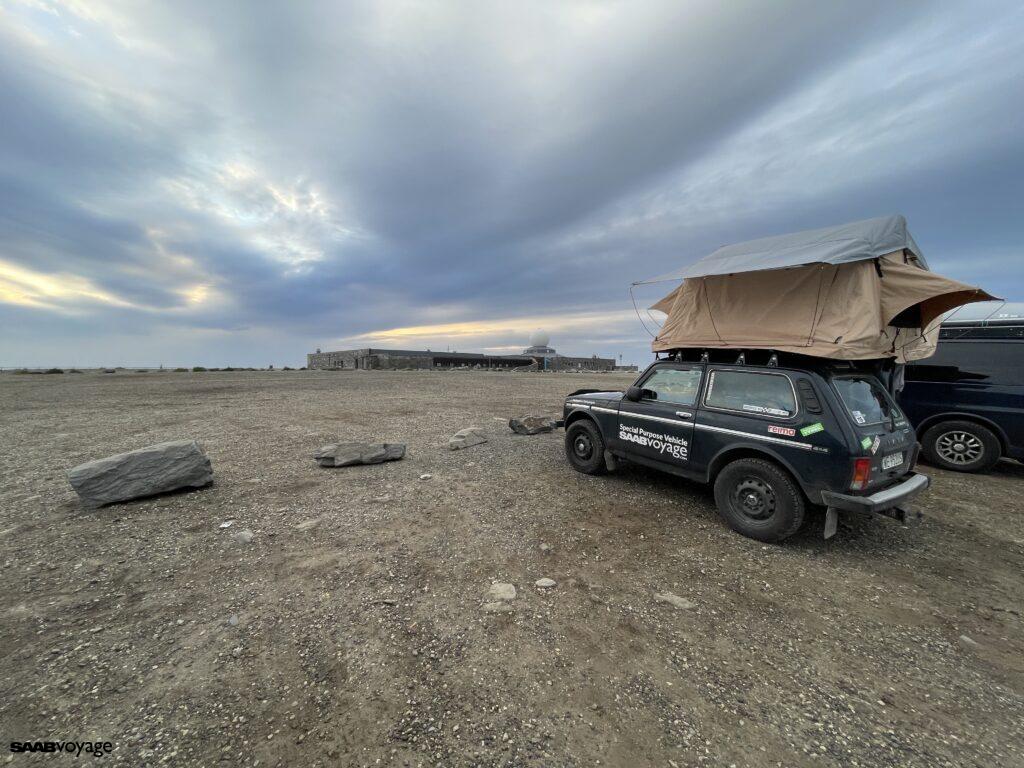
The next day, 14 July 2022, we celebrated Julia and Joanna’s birthdays by eating waffles, something specific to Nordkapp in our family’s tradition. And then a walk, photos …. and we drove south, towards Alta.
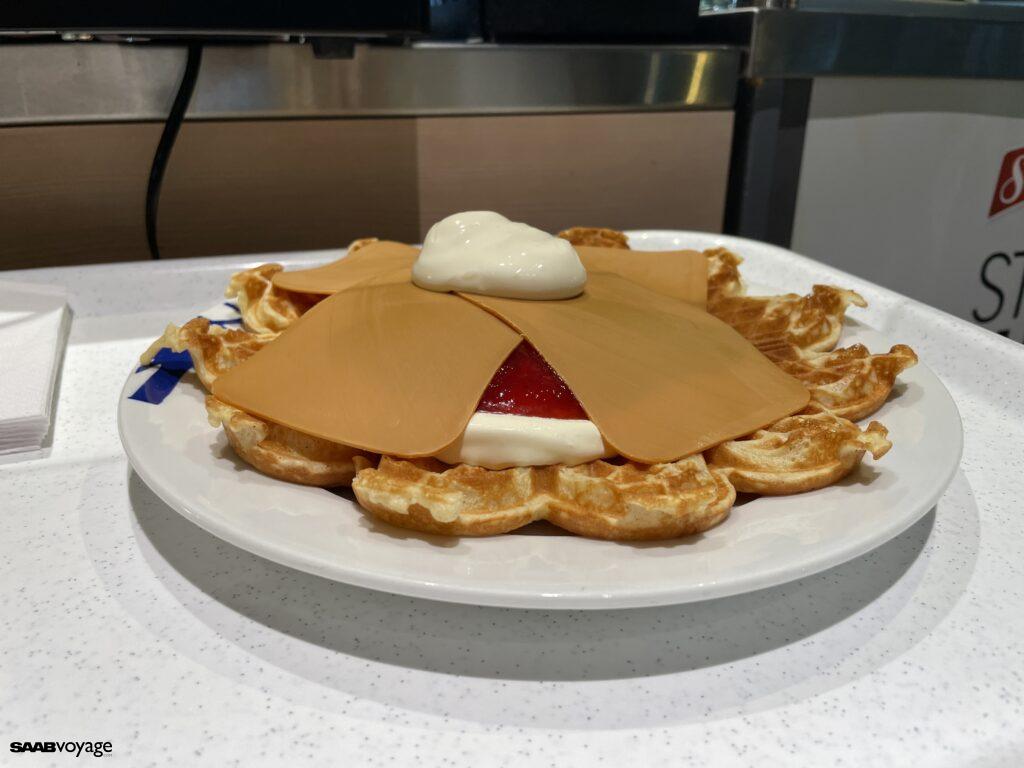
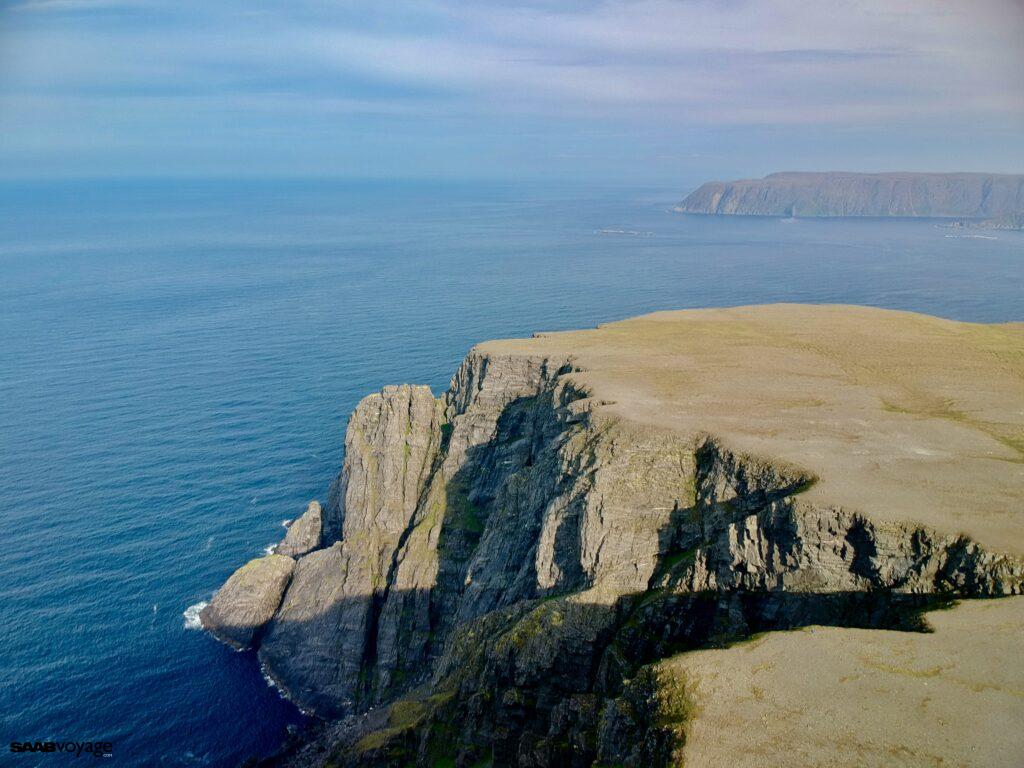
To be continued…
Did you like the text? Now it’s your turn. We’ll be happy to stay in touch:
- Comment, for you it’s a moment, for us it’s a very important clue.
- If you think this post is valuable or would like to share with other readers – share our post – it means that you appreciate our work.
- Keep in touch, like us on Facebook or Instagram. Every day new photos, inspirations, interesting information.
The form you have selected does not exist.
One Reply to “Nordkapp with rooftop tent 2022 – part 2”